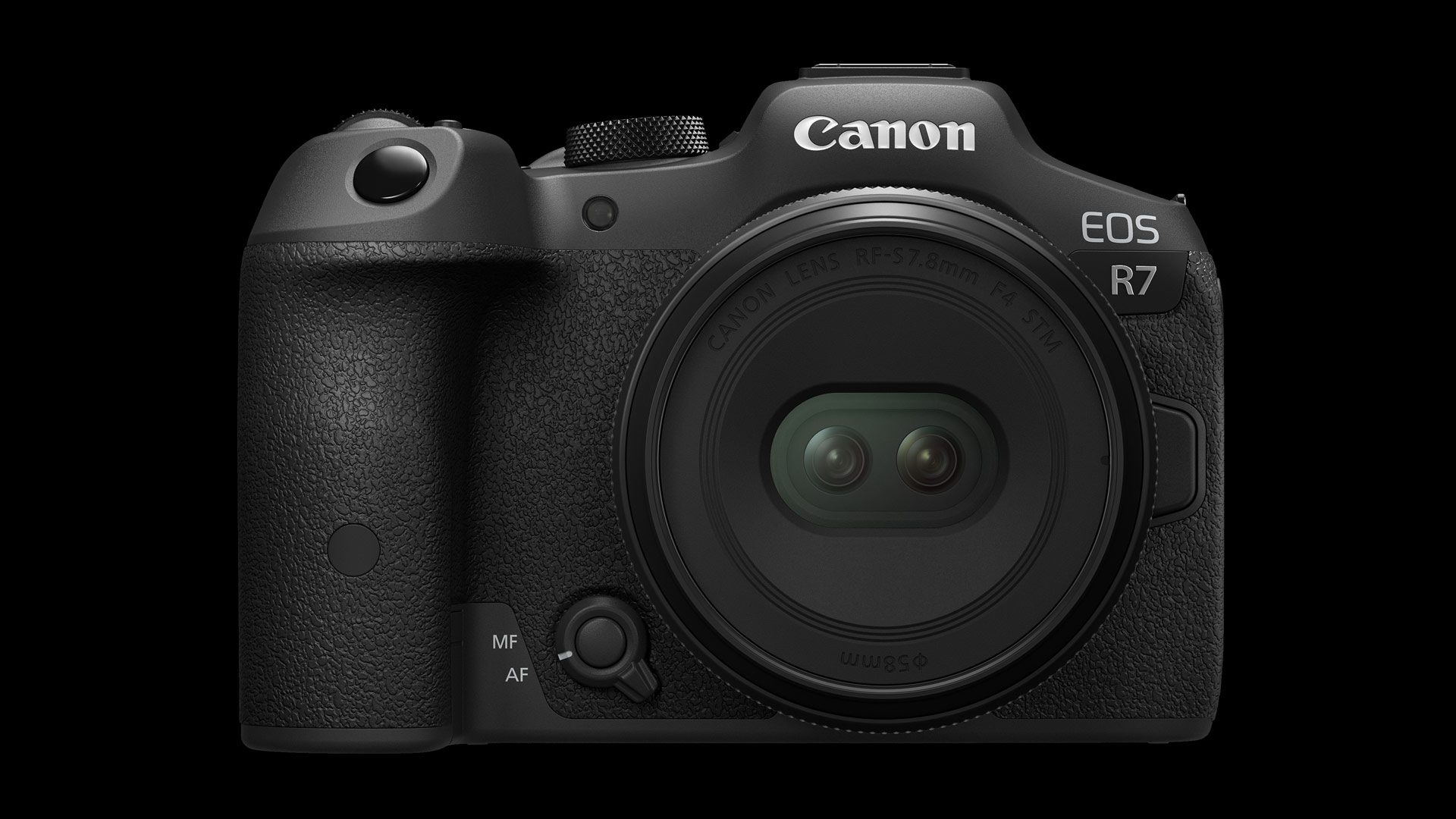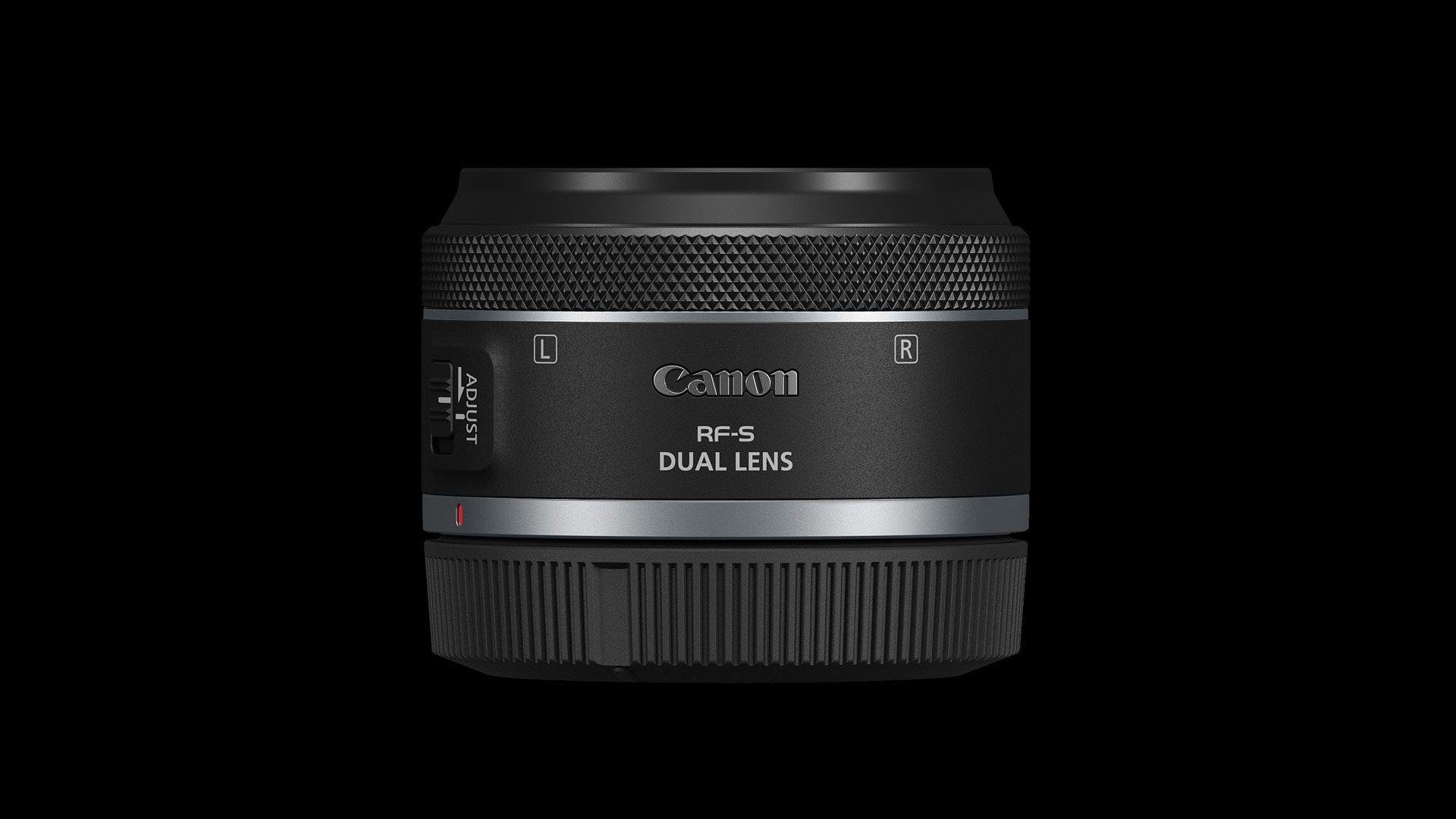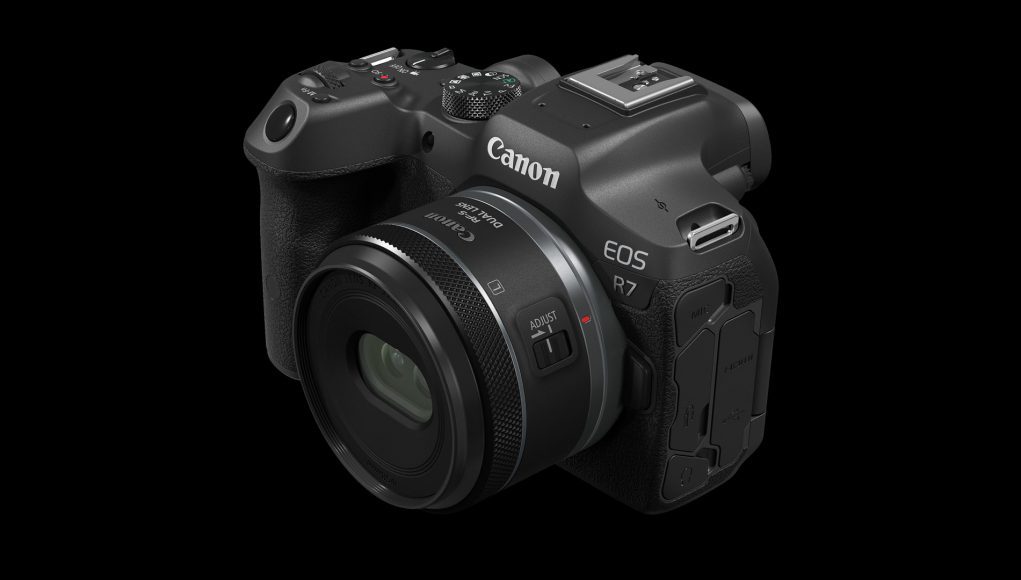Canon today announced a more affordable lens option designed for social media creators and videographers interested in VR and 3D content creation.
Back in June, Canon announced its RF-S3.9mm F3.5 STM Dual Fisheye lens, which was designed to allow its line of cameras to take spatial video and photos—priced at $1,099.00.
Now the company is widening its line of dual lens optics with an even more affordable VR lens system with the introduction of RF-S7.8mm F4 STM DUAL lens, which is going on sale this November for $449.99.

As the name suggests, the lens offers a 7.8mm focal length, as well as a 60-degree angle of view. Like the previously released Dual Fisheye lens, the new lens is also compatible with Canon’s latest cameras that support RF mounts, which includes EOS R, R5, R6, RP, and the R7.
While admittedly offering a lower field-of-view (FOV) than the 144-degree FOV of its bigger brother, it’s also less than half the price.

Previewed at Apple’s 2024 WWDC, Canon intends to use the new lens to meet the growing demand for accessible spatial video creation.
Notably, the new RF-S7.8mm F4 STM DUAL lens is said to operate like a traditional 2D RF lens, enabling easy setup for newcomers, and allowing anyone with its latest RF mount cameras to create immersive content for headsets like Apple Vision Pro and Meta Quest 3.
According to Hiroto Kato, Canon’s vice president of Imaging Products & Solutions, the RF-S7.8mm F4 STM DUAL lens is “an exciting step” in making 3D content creation accessible.
“With the RF-S7.8mm F4 STM DUAL lens, Canon is not only providing a new visual tool but also enhancing the way creators communicate using emerging VR, spatial and 3D technologies,” said Kato says. “This lens allows users to capture immersive content, bridging the gap between traditional content creation and the latest in VR and Spatial imagery. It’s an exciting step forward in making high-quality 3D content more approachable for everyone.”
The new dual lens is scheduled for release in November 2024, priced at $449.99. Check out the specs below:
| Specification | Detail |
| Focal Length | 7.8mm |
| Maximum and Minimum Aperture |
f/4.0 – f/16 (1/3 stops, 1/2 stops)
|
| Lens Mount Type |
Canon RF Mount; Plastic Mount
|
| Interpupillary Distance / Baseline Length | 11.8mm |
| Minimum Focusing Distance |
0.49 ft. (5.9 in.) / 0.15 m
|
| Maximum Magnification | 0.07x |
| Angle of View (Diagonal) | 63° 00′ |
| Lens Construction (each lens) |
9 elements in 7 groups
|
| Special Elements (each lens) |
Two UD lens elements
|
| Lens Coating |
Super Spectra Coating
|
| Filter Size Diameter |
58mm screw-type filter
|
| Rear Mounted Gelatin Filter Holder | Not Supported |
| Aperture Blades (each lens) | 7 |
| Lens Switches |
Left-right focus difference adjustment mode switch
|
| Dust/Water Resistance | Not Provided |
| Focusing System |
Gear type STM focusing
|
| Left/right focus difference adjustment |
Provided, user-adjustable using the Control Ring
|
| Dual Pixel CMOS AF |
Provided; Horizontal: approx. 30%, Vertical: approx. 46%
|
Focus Guide – Shooting Mode |
|
| Photo Mode |
Left lens only supports focus guide
|
| Photo Mode with L/R adjustment switch enabled |
Both Left and Right lenses support focus guide
|
| Video Mode |
Left lens only supports focus guide
|
| Video Mode with L/R adjustment switch enabled |
Both Left and Right lenses support focus guide
|
| Full-time Manual Focusing |
Both Left and Right lenses support focus guide
|
| Control Ring | Provided |
| Optical Image Stabilization | Not Provided |
| Stabilization with in-body IS (EOS R7) | Not Supported |
| Dimensions |
ø2.7″ x 1.6″ L (ø69.2mm x 41.5mm)
|
| Weight |
Approx. 4.6 oz. (131g)
|
Accessories |
|
| Lens Hood | Not Supported |
| Lens Cap | E-58II (bundled) |
| Dust Cap |
Canon Lens Dust Cap RF (Bundled)
|
| Lens Case |
Canon Lens Case LP1014 (sold separately)
|
| Extension Tubes | Not compatible |
| Close-up Lenses 250D / 500D | Not compatible |
| Canon RF Extender 1.4x/2x | Not compatible |
| Canon Gelatin Filter Holder III/IV | Not compatible |
| Rear Gelatin Filter Holder | Not compatible |







